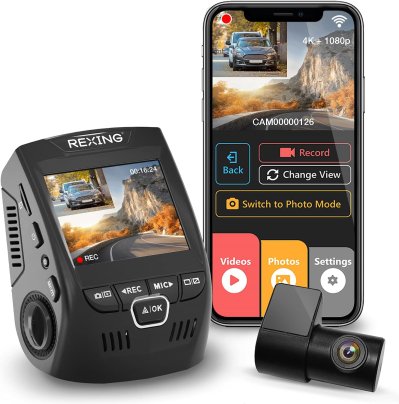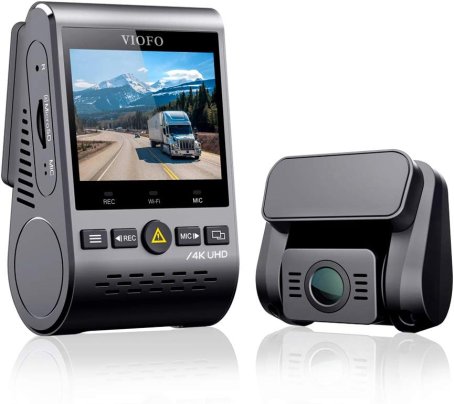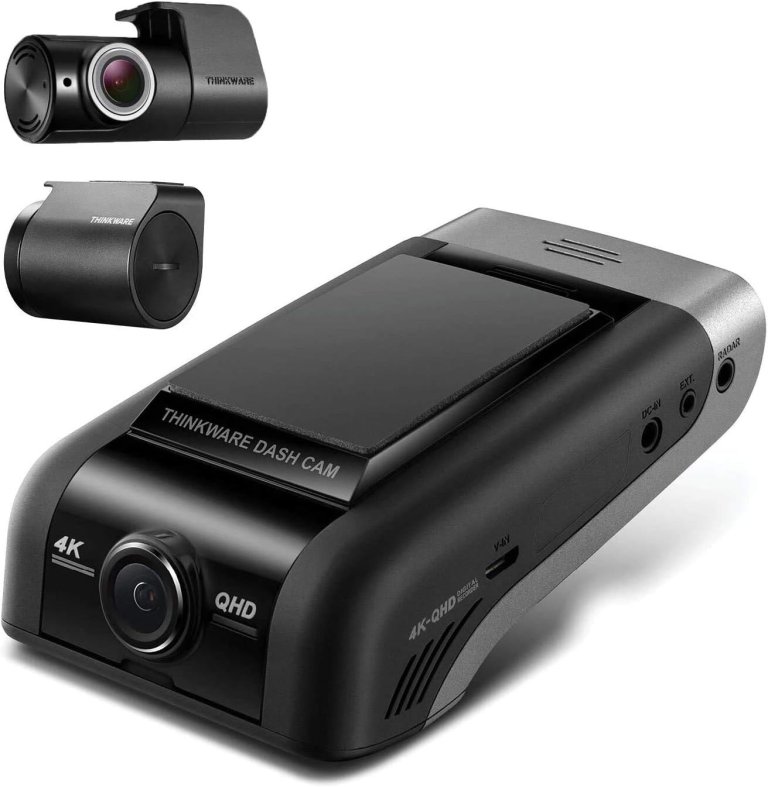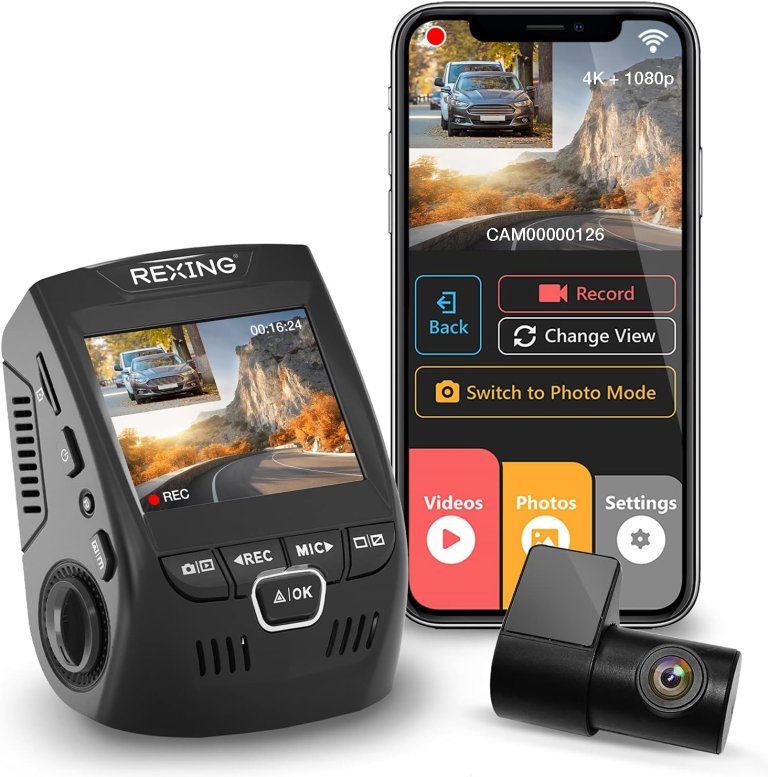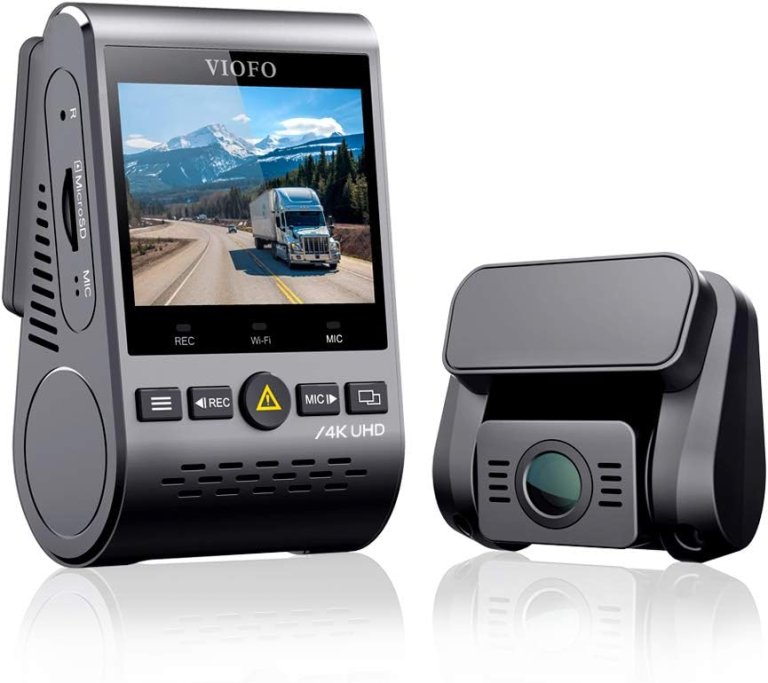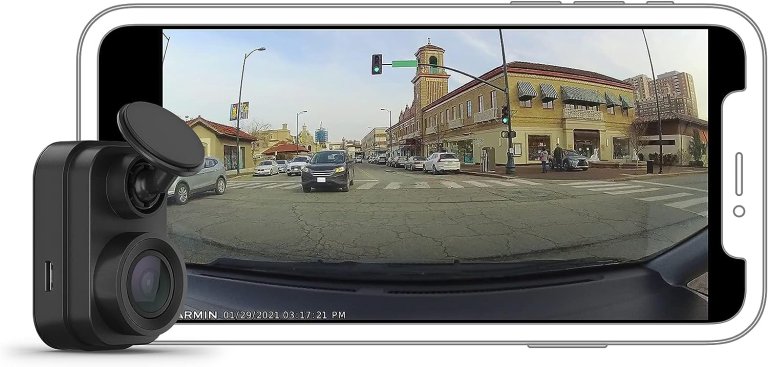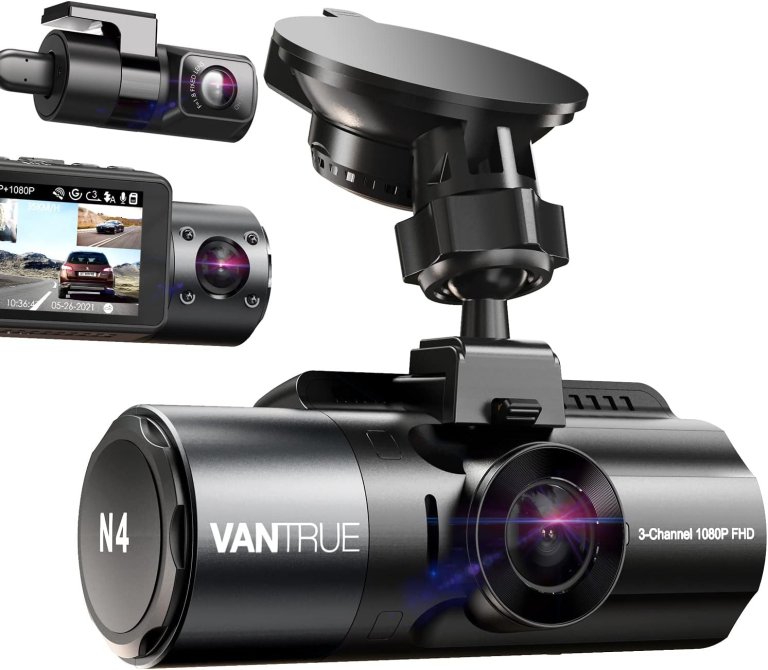We may earn revenue from the products available on this page and participate in affiliate programs. Learn more ›
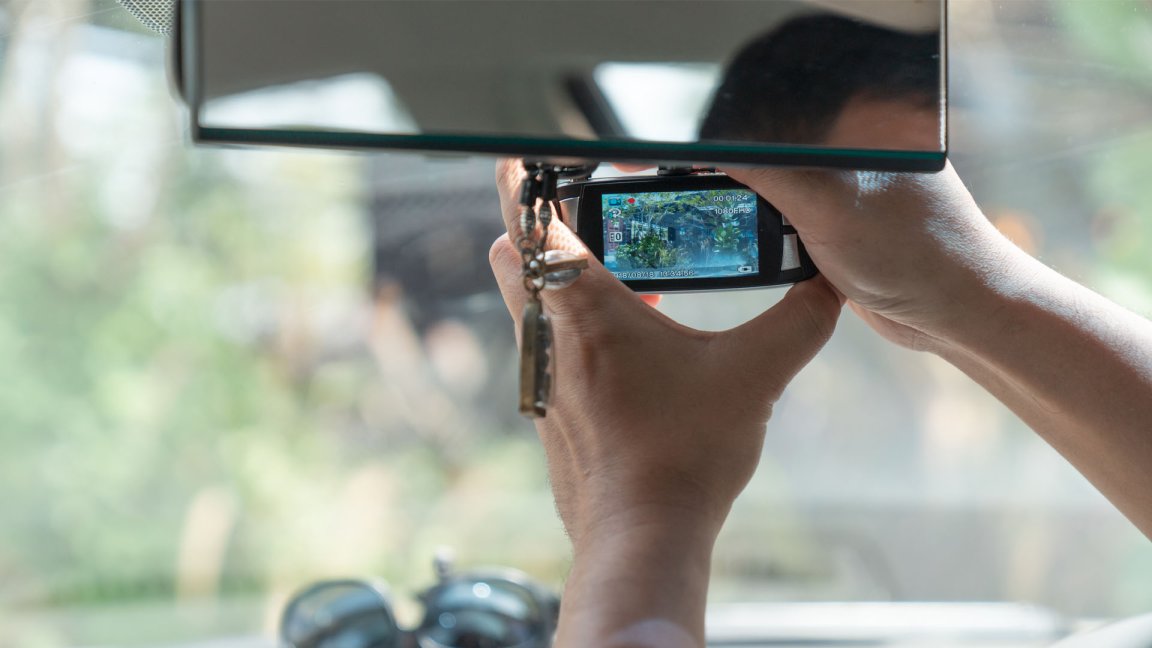
A reliable dash camera is the best eye-witness you can ask for after a crash. Fault is too often assigned based on who is the best storyteller and not the evidence at hand. A quick look at a video, even a basic one, can change who is responsible for tens of thousands of dollars in liability. But with the countless cheap knockoffs and a never-ending list of specifications and features to consider–cloud storage, live view, app integration, LTE hotspot, resolution quality, shutter speed, and field of view, it’s hard to get started in your search, let alone reach the end of it.
If slogging through forum threads and nerdy tech write-ups for hours on end isn’t your thing, don’t worry — we did it for you. Whether you’re a long-distance driver, a rideshare worker, or just an average person wanting to help protect your car against the reality of the road, a solid dash camera often pays for itself when trouble strikes. These are our picks for the best front and rear dash cameras.
Summary List
- Best Overall: Thinkware U1000
- Best Value: Rexing V1P
- Honorable Mention: VIOFO A129 Pro Duo
- Best Minimalist Camera: Garmin Dash Cam Mini 2
- Best Camera for Taxi/Rideshare drivers: Vantrue N4
- Best Long-Distance Driving Camera: Blackvue DR900X-2CH DMS Plus
Our Methodology
There’s a lot more to dash cams than the name might suggest. Years ago they might have just recorded the road ahead, but shooting high-quality video is only where many cameras today begin. When I started my research I knew there were a couple of things people would always care about, namely resolution. Anything less than 1080p or 30fps was ruled out entirely.
Beyond that, I employed The Drive’s review methodology to evaluate an array of other features including things like parking monitoring, app integration, and dynamic range. Forum threads, as always, played a big part in narrowing down the choices. For the most part, most dash cams are using the same image sensors and processors, so it’s what each individual company does with them that matters. Spec sheets can be informative, but it’s user experiences — and detailed ones at that — that can set apart a dash cam, for better or worse.
Reviews & Recommendations
Best Overall
Thinkware U1000
See ItPros
- 4K UHD front camera captures license plate level detail
- Surveillance mode monitors for impact while parked
- Supercapacitor allows for better heat management
- Built-in GPS
Cons
- High price point compared to competitors
- Some users report app bugs
Thinkware’s range of dash cams runs the gamut on prices and features, with the U1000 standing as their pinnacle offering. With a 4K, 30fps front camera and a 2K, 30fps camera in the rear, the U1000 offers the best outright resolution on the market today. The front camera also can record in 2K at 60fps if speed takes precedence over outright resolution. Sony’s STARVIS sensor integration helps to make the U1000 one of the best low-light dash cams available.
Alongside its video capabilities, the U1000 also comes with a host of other features. Thinkware Cloud allows you to locate your vehicle, receive impact notifications, and view a live feed of the cameras all through an app on your smartphone. Their road safety warning system can provide a forward collision warning and a lane departure alert. The U1000’s safety camera alert function can warn you of approaching red light and speed cameras on the road. At just under $600, the U1000 is easily one of the most expensive options out there, and for good reason.
Best Value
Rexing V1P
See ItPros
- 4K front camera captures license plate level detail
- Built-in Wi-Fi for file transfer
- Supercapacitor allows for better heat management
- 2.4-inch LCD display view without having to go through a phone
Cons
- Lacks more advanced features
- 1080p rear camera may not capture small details
At $159, the Rexing V1P is one of the most budget-friendly, two-channel 4K dash cams available. The front camera captures 4K video at an ultra-wide 170-degree field of view. Thanks to its 8MP CMOS sensor, the V1P produces native 4K video, but be warned, many supposedly 4K cameras, including some of Rexing’s cheaper options, are only 2K cameras digitally upscaled to 4K. If you find yourself needing to read a license plate number from a hit and run, it’s important to know you’re getting the resolution you’re paying for.
Thanks to the integration of the same Sony STARVIS tech found in the U1000, the V1P offers solid low-light recording performance, although some users say it still fails to match the quality of Thinkware’s nighttime performance. The V1P also features a g-sensor, parking mode, built-in Wi-Fi for file transfer, and a supercapacitor instead of a battery. MicroSD cards up to 256GBs are compatible with the V1P. Compared to the U1000, the V1P is a fairly stripped-back option, but if all you need is to record the road around you, the V1P is an exceptional value.
Honorable Mention
VIOFO A129 Pro Duo
See ItPros
- 4K front camera captures license plate level detail
- Built-in Wi-Fi for fast file transfer
- Advanced parking mode captures time before and after impact
- 2-inch HD LCD display for easy viewing
Cons
- Relatively narrow field of view
- 1080p rear camera may not capture small details
If outright video quality is your biggest concern then the VIOFO A129 should be on your shortlist of dash cameras. The front camera is equipped with a Sony 8MP IMX317 sensor recording at Ultra HD 4K with 30fps. Similar to the U1000, the VIOFO also offers the ability to switch the front to 2K at 60fps. While the A129 and the U1000 offer similar hardware for their front cameras, users actually report the A129 having slightly sharper front video than the U1000. However, this is somewhat counteracted by the fact that the A129’s rear camera can only record in 1080p. The A129 also has the most narrow field of view when compared to the Thinkware and Rexing options here, with just a 130- and 140-degree field of view in the front and rear, respectively.
Beyond video quality, the A129 includes an advanced parking mode that will record the 15 seconds leading up to an incident and the 30 seconds after. Footage can be stored on a microSD card up to 256GB. Information can also be transferred quickly overbuilt-in 5GHz Wifi to a phone or computer.
Best Minimalist Camera
Garmin Dash Cam Mini 2
See ItPros
- Ultra small, key-sized footprint
- Storage up to 512GB
- Garmin app allows for live view and cloud storage
- Voice control allows for hands-free operation
Cons
- 1080p resolution may not capture small details
- Relatively expensive given its features
All the two- and three-channel, ultra-high resolution dash cams are great options if you need the additional coverage and features they offer, but if all you’re looking for is a simple, out-of-sight dash camera, then Garmin’s Mini 2 is a serious contender. At the size of a car key, the Mini 2 can discreetly mount behind your rearview mirror with a minimal footprint. The Mini 2 records in 1080p video at 30fps through its 140-degree field of view Garmin Clarity HDR optics.
Although the Mini 2 is relatively stripped back in its functions, it still offers a parking guard feature, live view through the Garmin app, and Wifi file transfer. Users can also operate the Mini 2 through voice controls. Using spoken commands, you can start/stop audio recording, take pictures, save videos, and more. While the 1080p resolution might rule out the Mini 2 as an option for drivers who need more detailed video, it remains a great minimalist option.
Best Camera for Taxi/Rideshare drivers
Vantrue N4
See ItPros
- IR lights discreetly illuminate the cabin
- 18-month extendable warranty
- 24-hour parking mode for constant monitoring
- Heat-resistant supercapacitor
Cons
- No Wi-Fi or Bluetooth support
- GPS sold separately
Two-channel dash cam setups are sufficient for most drivers, but taxi and rideshare drivers would likely want to look into a three-channel setup for an additional cabin cam. Just like a dash camera recording out of the front of your vehicle helps protect you in the case of an accident by documenting what really happened, a cabin cam can protect rideshare drivers should a passenger cause an issue during a ride. Or maybe you just want to create YouTube compilations of your weirdest passengers. Either way, the Vantrue N4 is a great option if you’re in the market for an affordable three-channel dash cam setup.
The N4’s front camera records 4K video at 30fps, with the rear and interior cameras both recording at 1080p. The cabin cam includes 4 IR LED lights that help to illuminate the inside of the car without disturbing the driver or any passengers. The N4 is a great option for rideshare drivers wanting to add a layer of security to their work.
Best Premium
BlackVue DR900X-2CH DMS Plus
See ItPros
- 4K UHD front camera captures fine details
- AI-driven driver monitoring system
- Native parking mode
- Built-in Wi-Fi and GPS
Cons
- High relative cost
- Only one external camera
Widely considered Thinkware’s biggest competitor, BlackVue makes a large range of premium dash cams for every need. The DR900X-2CH stands at the top of its offerings, with an 8MP CMOS sensor recording 4K UHD, 30fps video at the front. While the DR900X does rival the U1000 in its front camera performance, we placed it here for its unique AI-powered driver monitoring system.
The AI algorithm detects issues such as drowsy driving, distracted driving, hand distraction, and more. After detecting any awareness issues, the system emits a beep and LED blinking signals to alert the driver. For someone who commonly drives long distances, BlackVue’s driver monitoring system expands the DR900X from simply recording an accident, to helping prevent it from happening in the first place.
Our Verdict on the Best Front and Rear Dash Cams
The Thinkware U1000 offers the best combination of outright video resolution and innovative added features on the market. But if recording is all you need, the Rexing V1P offers incredibly competitive performance in most conditions for roughly a quarter of the price of the U1000.
Things to Consider Before Buying a Dash Cam
Resolution and Optics
At the core of any dash cam, you’re looking for high-quality video recording that can capture the details you need in the case of an accident. For many accidents, 1080p will be sufficient to capture the relevant details, but many users splurge for 4K to capture smaller details like license plate numbers in the event of a hit-and-run. Be warned, some manufacturers will digitally upscale lower resolution video for marketing reasons, but these cameras don’t produce the same detail as native 4K cameras. If the camera’s sensor is below 8 megapixels, it isn’t capable of true 4K video. Beyond resolution, you also want to pay attention to things like field of view, low-light performance, and fps rate.
Video Channels
With most companies offering camera setups for the front, rear, and interior of your car today, the term dash cam is a bit of a misnomer these days. But, you still can just get a single camera for your dash, the issue is whether you should. Many dash cam users go for two-channel setups to record in front of and behind their vehicle. This should cover your bases for most applications, but if you’re a long-distance or rideshare driver, you might want to consider a cabin camera as well.
Power Options
Most dash cams will come with a USB cable as their primary source of power from 12V outlets in your car. This poses a problem for the parking mode that many dash cams have since it’s common for cars to shut off power to their 12V outlets when the car is not running to prevent it from draining the battery. To get around this, dash cam manufacturers will usually sell a separate power cable that hardwires into the car’s battery or connects to the OBD port. Some companies also sell separate battery packs that charge up while the car is running and power the dash cam while it’s shut off, but these can increase total costs quickly. Before choosing a dash cam, it’s worth it to consider the power options you have for it.
Front and Rear Dash Cam Pricing
A reliable, high-resolution dash cam can cost anywhere from $100 to $600. If you’re strictly looking for 4K video performance, you can find a mono-channel dash cam at the bottom of that range. Things get more expensive as you start looking at two- to three-channel setups, as well as additional features like built-in Wi-Fi, GPS, or LTE.
FAQs
You’ve got questions. The Drive has answers.
A: I think the question answers itself, but for the sake of time: hilarity.
A: The answer to this depends on which state you reside in. While some have no laws around dash cams at all, others either prohibit them entirely or dictate the legal size and location of them. In New York, drivers actually save 5 percent on their insurance premium for having a dash cam equipped.
A: If you’re installing a simple mono channel setup, or are particularly tech savvy, installation should be feasible. However, if you’re buying a more complicated two- or three-channel setup or are going to hardwire your dash cam for parking mode functionality, manufacturers generally recommend hiring a professional.
A: Short of the darkest window tints — 20 percent or more — most tints won’t affect the performance of your dash camera. Many dash cam manufacturers also sell a circular polarizer to reduce any undesired glares or reflections in your video.
A: Manufacturers differ in the storage sizes that are compatible with their models, ranging anywhere from 128GB to 512GB. For most purposes, you’re best off going with the largest storage capacity the model allows. You also need to buy one with the appropriate speed class for the video resolution you’re recording in.

